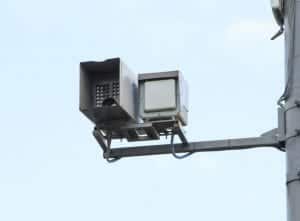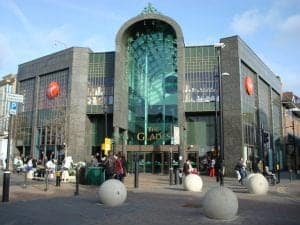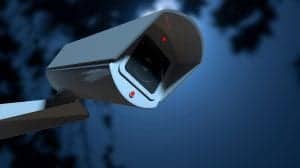
Smart buildings are one of the defining pieces of London’s urban development in our age. Augmented by emerging IoT technologies, smart buildings offer unprecedented opportunities to improve operating efficiency and productivity.
But the “I” in IoT is the gateway to a far more impressive world, and the biggest players in the smart buildings market have already caught a glimpse of it. The mesh of interconnected buildings, campuses, urban facilitates and homes is slowly morphing into the shape of a smart city — a greener, friendlier, more productive city, in whose fashioning you and your business can play an active role.
How smart buildings are transforming our cities, and what you can do to be at the forefront of this wave of transformation, is what we are going to talk about today.
London is one of the busiest business hubs in the world. More than 70% of London’s workforce travels to work by car or by bus, which puts considerable pressure on the city’s transportation and parking infrastructure.
Office buildings are hotspots of transportation-related activity, so it comes as no surprise that this is where many opportunities to improve our daily life arise.
Parking efficiency is the area with the most visible improvement, and the technology behind it has crept in without much fuss during the last few years. Parking access automation and parking guidance can significantly reduce waiting times, cluttering and small-scale traffic.
Parking access automation refers to automating access control, logging and management processes in office parking areas. This is achieved primarily by leveraging data from high-resolution CCTV cameras. Using technologies such as automatic number plate recognition (ANPR) cameras, access control software can quickly permit or deny access to vehicles, log their arrival and departure time, and construct parking space usage statistics in real time.
Occupancy data, aggregated from multiple parking locations, can be used for parking guidance and quickly guiding drivers towards nearby parking spaces. This is particularly useful for companies that have multiple parking areas, around multiple buildings or on busy streets with small parking areas.

According to a building energy efficiency survey conducted by the UK Department for Business, Energy and Industrial Strategy, offices, retail and industrial buildings were the top non-domestic energy consumers in the UK, most of it in the form of electricity. Internal lighting accounted for more than half of the electricity use, and was the second largest end-use of energy, trailing significantly behind space heating.
Both internal lighting and space heating (which, together, account for nearly half of the total energy consumed by non-domestic buildings in the UK) are highly susceptible to waste and mismanagement.
Using smart lighting and HVAC installations, advanced building energy management systems can save up to 60% on energy, depending on their capabilities.
These installations save money primarily by turning off or reducing lighting and HVAC parameters, depending on occupancy, time of day, ambient conditions and usage statistics. Modern smart lighting systems are not simply on-off switches hooked to presence sensors; their functioning takes into account ambient lighting conditions and usage statistics as well.
Not only do these systems reduce operating costs, but they contribute to reducing each building’s carbon footprint, and improve the efficiency and lifetime of the city’s electrical networks. They also improve the efficiency of many modern business practices, such as remote working.

Modern smart building deployments treat security systems not only as an essential asset for data and staff protection, but also as a useful source of access data, and as an opportunity to improve daily operations.
This trend initially took the form of what we now call IT-integrated security, where the security infrastructure was digitised and integrated with the rest of a company’s IT infrastructure, in order to accommodate its traffic demands and facilitates management. But additional opportunities were identified — and smart building designers were quick to capitalise on them.
Security endpoints, such as security cameras and motion detectors, can be integrated with access control modules and serve as sources of valuable data regarding access events and patterns.
This trend has also opened the way for a more inclusive approach to security, allowing for the easier and safer expansion of business premises, especially for multi-site operations partially housed outside traditional business areas.

Why the focus on smart buildings? Their advantages are compelling, but are they compelling enough to warrant looking into technologies that are non-trivial to integrate, and raise new challenges in terms of deployment and security?
The answer lies in sustainability. Smart buildings, and the smart cities that they enable, grant not only occasional opportunities for more efficient operation but a sustainable, steady improvement of our working and living experience.
Integrating smart building technologies into your office, and participating in the smart city enablement of your city, will not only earn you a reduced energy bill or a better parking experience today. It will also allow you to capitalise on the reduced carbon footprint of your office, the improved security and convenience of your parking spaces, and the reduced fuel consumption of your car.
Being at the forefront of this shift is not only a head start in terms of early benefits but also a foundation for solid development in the long run.

Smart building technologies have a great deal of potential, but leveraging them in a sustainable manner, over long periods of time, in interconnected systems seems like a daunting responsibility. When set against timeframes typical for facility development, which routinely deals in decades rather than years, many of these technologies are intimidatingly new.
We are still discovering many of the challenges that they introduce. For solutions, we depend more on engineering creativity than on well-known practices.
The main challenges that smart buildings introduce are:
Infrastructure scaling is the most far-reaching of these challenges. Even with the increased use of wireless endpoints, wired networks still form the backbone, and carry the bulk of the endpoint traffic in modern office buildings.
The wired infrastructure, then, is where most of the scaling effort will be focused. However, cabling is the longest-lived section of a company network.
The norm today is in the region of 15-20 years, and these numbers are expected to go up. Four or five generations of endpoint equipment, if not more, are routinely outlasted by the cabling which enables that equipment to communicate.
With more than 20 years of experience in offering cabling solutions to London commercial buildings, ACCL is at the forefront of innovation in this field. Take a look at our data cabling services and get in touch for your FREE, no-obligations on-site survey.
So far, structured cabling seems to be the only design solution that enables the cabling infrastructure of smart buildings to scale in the long run. Structured cabling breaks down the network infrastructure into function-specific sections.

Each section has a specific role, such as providing connectivity to user devices or smart sensors, or securely connecting the building’s core network to the ISP’s network.
Each section is designed according to a set of industry-sanctioned best practices. These practices are not arbitrary, but based on the experience and expectation of network engineers, device manufacturers, facility managers, and health and safety experts. They are also designed specifically in order to facilitate scaling, both horizontally and vertically.
Scaling structured cabling networks is a concerted effort focused more on network sections than individual endpoint. Fortunately, smart buildings offer a wealth of data that can be leveraged in order to plan the long-term development of your network.
The kind of data that you can use includes:
Diverse deployment conditions are another challenge that smart buildings bring — or, more accurately, make even more acute.
Network cabling, like any electrical equipment, needs to be shielded from moisture, extreme temperatures, dust and other unwanted ambient conditions. Office buildings fit the bill for electrical equipment-friendly equipment.
Traditionally, only a few types of IP-enabled gear, such as some security cameras, needed to be deployed under adverse conditions.
Network cabling has to reach security cameras, sensors, solar panels or lighting equipment placed outside the main buildings, exposed to ambient temperature, sun and rain. Some of this equipment itself may have special cabling requirements, such as redundant power and data cables.
In practice, this has two main consequences:
Long-distance cabling is a special case of this situation. Cables used for office networks — i.e. Cat5/6 cables, the ones that we usually call “Ethernet cables” — are designed to work over distances, and under ambient conditions, typical for an office building. That is, distances of up to 80-100 meters, with relatively little electrical interference.
Equipment used for smart buildings, especially those on large campuses, sometimes needs to be deployed at a great distance from the main building — hundreds of meters, sometimes more. The traffic requirements are not trivial either; high-resolution CCTV cameras used for security systems may need speeds in the Mbps region.
This speed, over this sort of distance, is where fibre optic cable starts being considered for deployment. Fibre optic cables are more expensive to purchase and install, but can carry signals over hundreds or thousands of meters, at high speeds.

Smart buildings are only the first step towards smart cities. From London and Amsterdam to New York and Sydney, we are living the earliest days of a major shift in how we live and work in our cities.
Smart building technologies, interconnected across buildings and campuses, offer unique development opportunities that benefit not only your own business, but the entire society, and not only during work hours, but 24/7.
Being at the forefront of this transformation offers not only a head start in capitalizing on the early opportunities — useful, but not essential, because this is not a zero-sum game — but also makes for a solid foundation for long-term development.
Integrating smart building solutions into your business’ infrastructure is challenging, but not out of reach, even for small businesses. A solid integration strategy, based on structured cabling, tight integration, and metric-based audit and development, can position your business at the forefront of this urban revolution.
Services related to this post: Smart Home automation installation services
Related posts: Interconnecting multiple offices Home automation Modern Cabling in building a new home